Close Readings
In which Norm spins up the new discs of THE FALL GUY and I SAW THE TV GLOW, and takes a moment to enjoy the week's new, hopeful vibe.
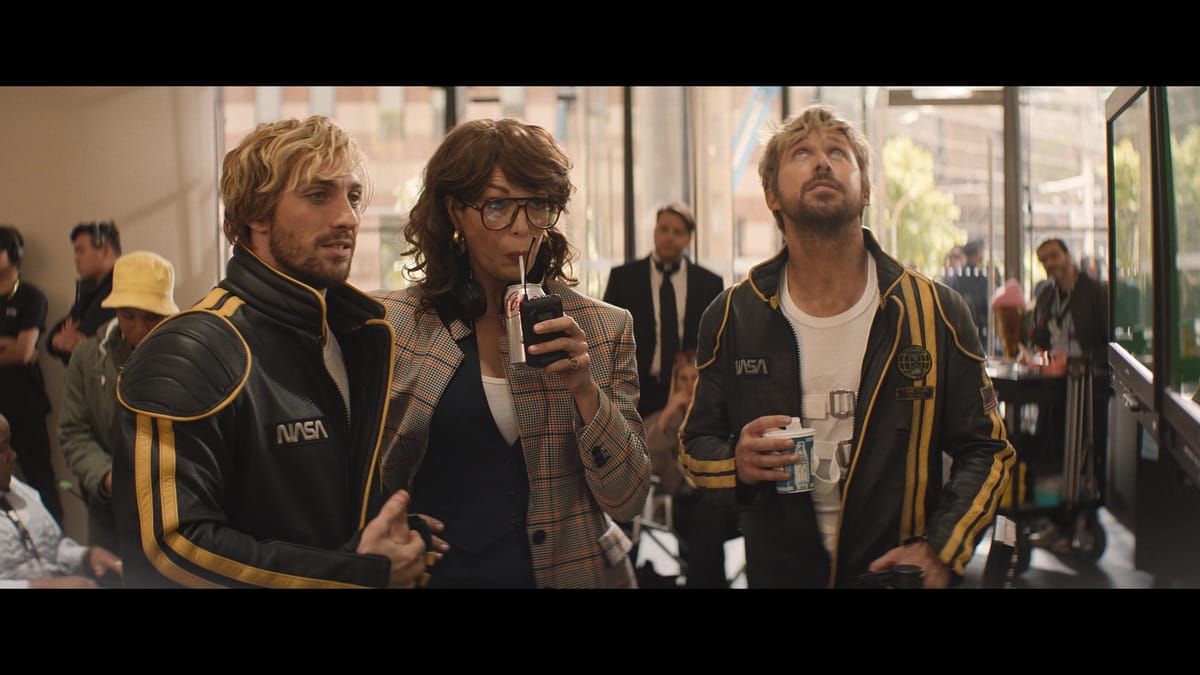
Before we get into this week’s new releases, I just want to take a moment and show you the best thing I’ve seen all month.
It’s the moment in Wisconsin earlier this week when Kamala Harris realizes she has a new slogan, and it’s wonderful.
“We’re not going back” was absolutely designed as an applause line, no question, but the crowd turns it into a chant, and you can actually watch Harris processing it with a laugh and a smile. The video ends with a Harris 2024 screen that says “Let’s Win This”, and yeah, that sounds pretty good for a generic rah-rah slogan. But we’re not going back says so much more, and you can hear the way it galvanizes the crowd. Hell, you can feel it.
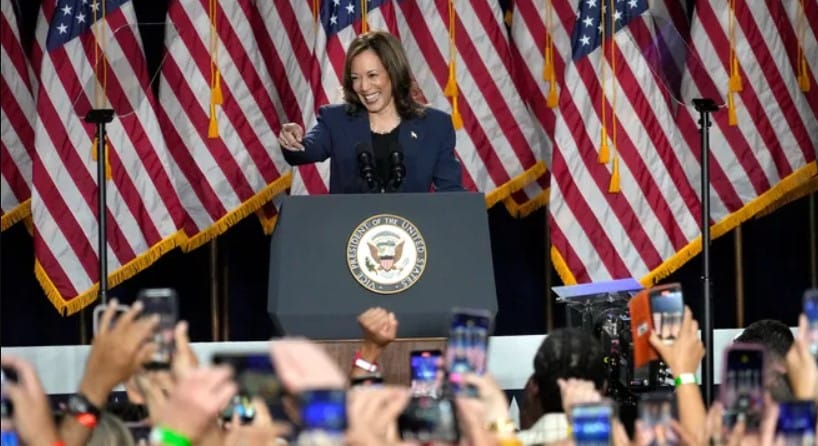
Anyway. After the last however many years, it’s really nice to remember what hope feels like. Let’s see what else is around this corner.
You know what else is really nice? A good popcorn movie. I haven’t seen Twisters yet, but I am hearing a lot of conversation about how it’s a satisfying audience picture, and how movies can once again just be fun star vehicles where attractive people have adventures and sometimes kiss; they don’t have to be, you know, about anything.
It’s a nice sentiment, and one with which I mostly agree, but let’s face it: That’s total Fall Guy erasure. Because The Fall Guy was right there earlier this spring, teaching us all how to enjoy the movies again. And now that it’s on disc, let’s celebrate it a little more, shall we?
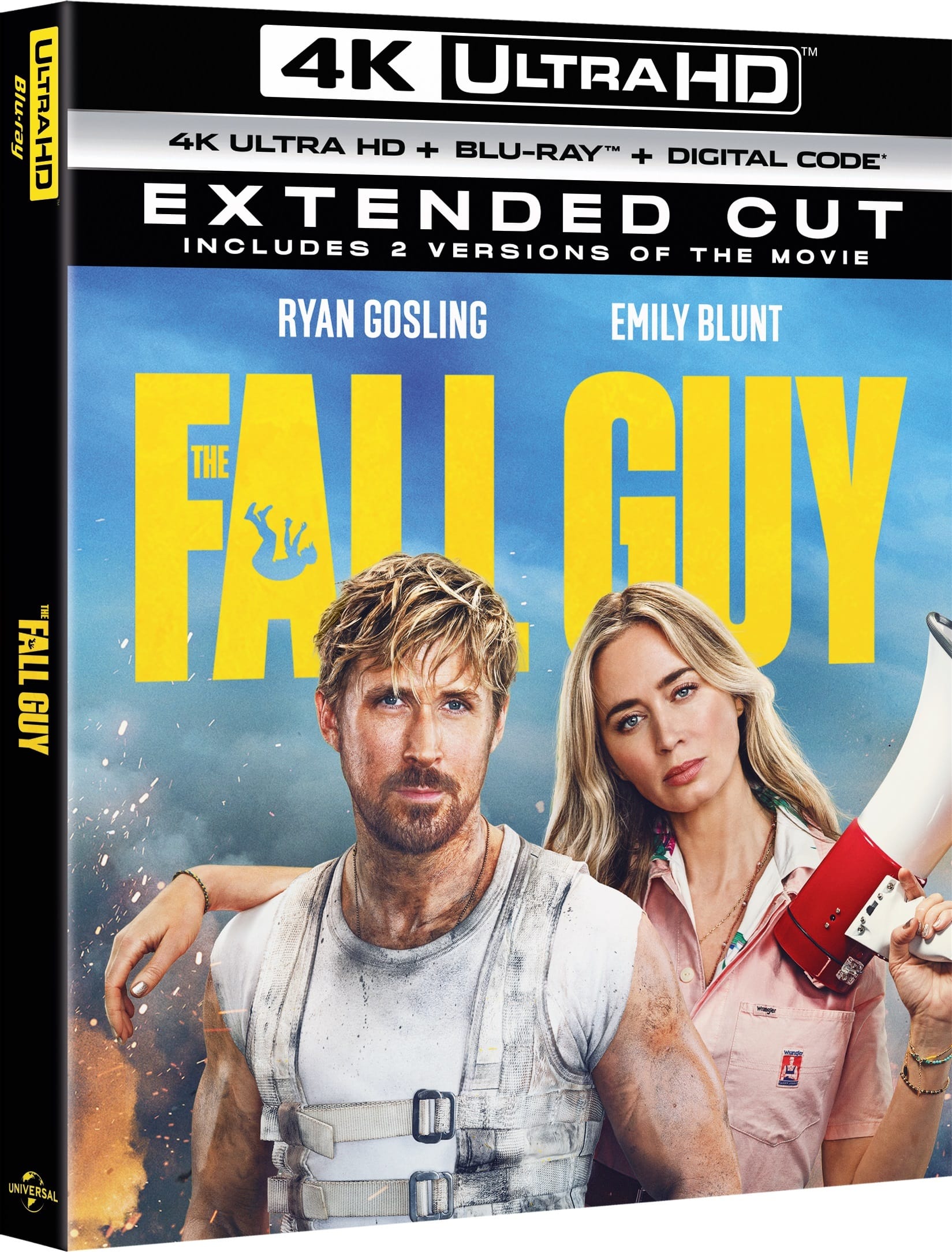
Honestly, The Fall Guy feels like a little miracle given how low my expectations were going in; after all, this is a big-screen update of an early-’80s TV series starring Lee Majors as a stuntman by day and a bounty hunter by night. And no, that concept didn’t make a lot of sense, but it was the early ’80s: If your coke was good enough, you could sell a network on Manimal.
Drew Pearce’s script rightly abandons the bounty-hunter angle, reimagining Colt Seavers – now played by Ryan Gosling, of course – as but a humble daredevil whose comfortable career of being set on fire and leaping off of high things was derailed by a botched gag for superstar Tom Ryder (Aaron Taylor-Johnson) that left him with a broken back and a crisis of confidence. He’s spent most of the last year retreating from his former life, even torpedoing a budding romance with camera operator Jody Moreno (Emily Blunt).
Colt is healed now, but he still has the yips, so he’s resigned himself to a life parking cars owned by industry people who vaguely recognize him. And then Tom Ryder’s producer Gail (Hannah Waddingham) calls him with a golden ticket: She wants him to go to Sydney and pick up where he left off, doubling for the unreliable A-lister in a sci-fi action epic … which is also Jody’s directorial debut. She’s asked for him and everything.
And so, yips or no yips, Colt goes to Australia – and finds out that Jody didn’t ask for him, that just a ruse to get him there to help her out of a jam, which is that Tom Ryder has gone missing and maybe Colt could go find him? Couldn’t be that hard to find one of the world’s biggest celebrities, right? Especially for a guy who’s doubled for him for years and knows his habits better than anyone?
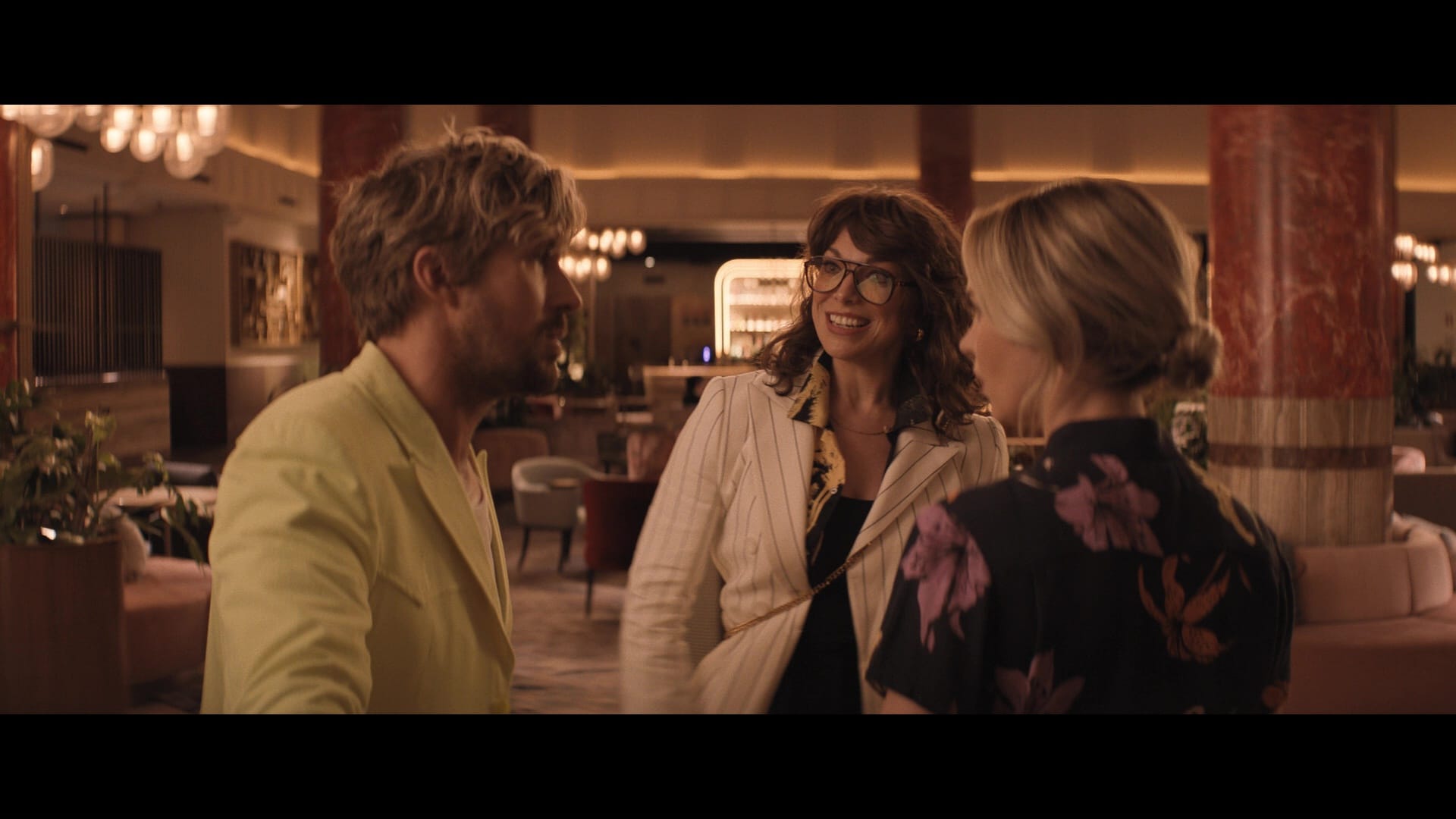
Well, funny story. No sooner does Colt arrive at Tom’s house than he’s attacked by a sword-wielding maniac (Teresa Palmer) determined to use him in an elaborate bit of Kill Bill cosplay; from there, he’s dosed with hallucinogens in a nightclub, attacked by goons, attacked by other goons and stuck in a room with a dead guy in a bathtub. And that’s just the first night; by morning, Colt will be framed for murder and running around Australia trying to clear his name – while still trying to save Jody’s movie, because Tom Ryder is a dick and Colt just wants to do right by the woman he still loves.
A quick aside to explain who Drew Pearce is: He’s the guy who co-wrote Shane Black’s Iron Man 3, and put those genre chops to work on the Fast & Furious spinoff Hobbes & Shaw. But just before that, he wrote and directed the frankly terrific 2018 B-movie Hotel Artemis, with Jodie Foster and Dave Bautista and Sterling K. Brown and Sofia Boutella and a whole bunch of other people having an absolute ball working in a hard-boiled action mode John Carpenter would recognize.
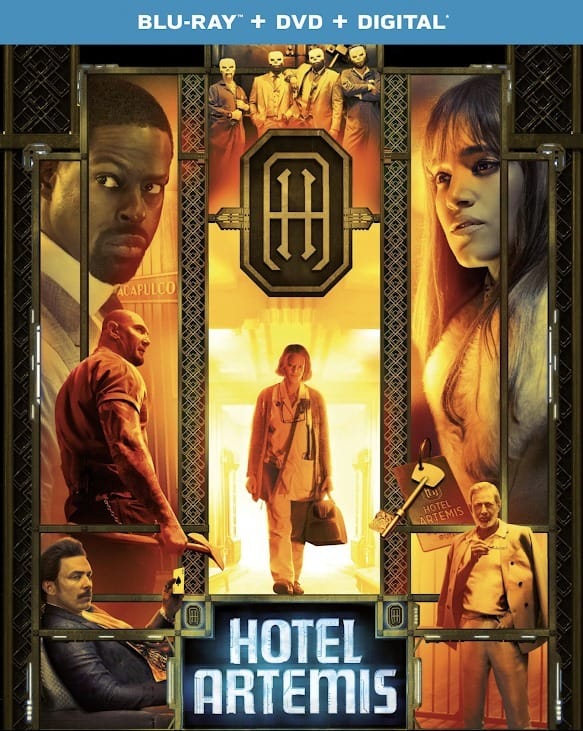
Pearce regularly embraces the possibilities inherent in genre storytelling, leaving room for surprise and delight in the heightened reality of a superhero picture or a near-future noir or a cars-and-explosions franchise, but also remembering that there are people running around in these things, even if they’re wearing super-suits or jumping off buildings or whatever the challenge of the day might be. Tony Stark has PTSD and feels defenseless without his armor; Deckard Shaw has a kid sister who needles him all the time. There’s a whole mess of crossed loyalties and old grudges bouncing around in the Hotel Artemis. The Fall Guy lets Pearce play to his strengths, turning a recognizably “real” world into an action-movie playground as soon as Colt arrives in Sydney.
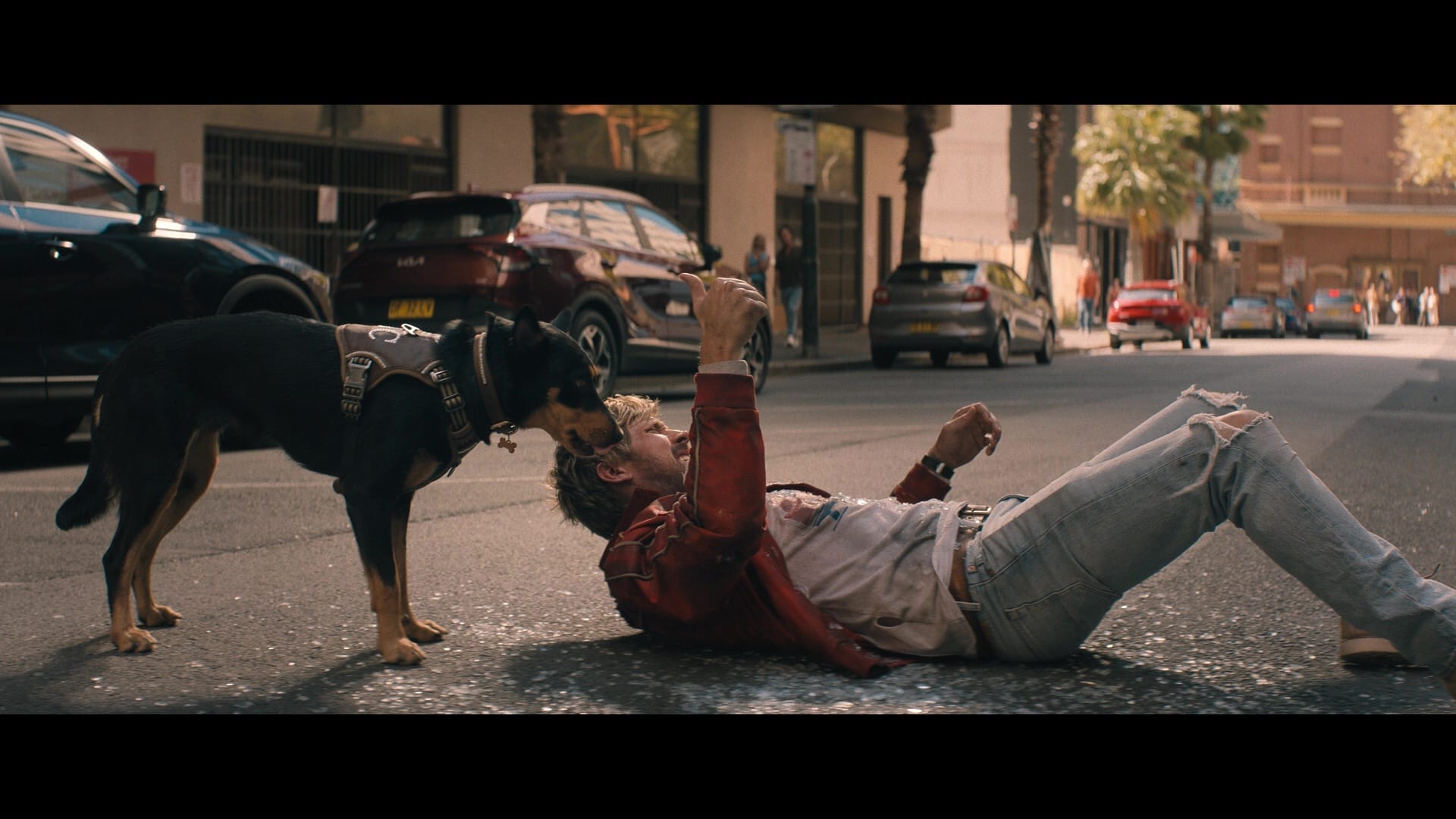
And a quick aside to explain David Leitch: He’s the veteran stunt player and stunt co-ordinator whose uncredited directorial assistance on the first John Wick launched him on his own A-list action career, directing Atomic Blonde, Deadpool 2, Hobbes & Shaw and Bullet Train and producing Nobody and Violent Night on the side. He’s the other reason The Fall Guy works the way it does, because guess what? It is, in fact, About Something.
The Fall Guy is about collaboration. It’s about how movies require teams of talented individuals to build intimate, ironclad relationships for the course of a project – and not intimate in that way, but in terms of having one another’s backs. It’s a film about trust, and how that’s a disappearing quality in the industry but also in general.
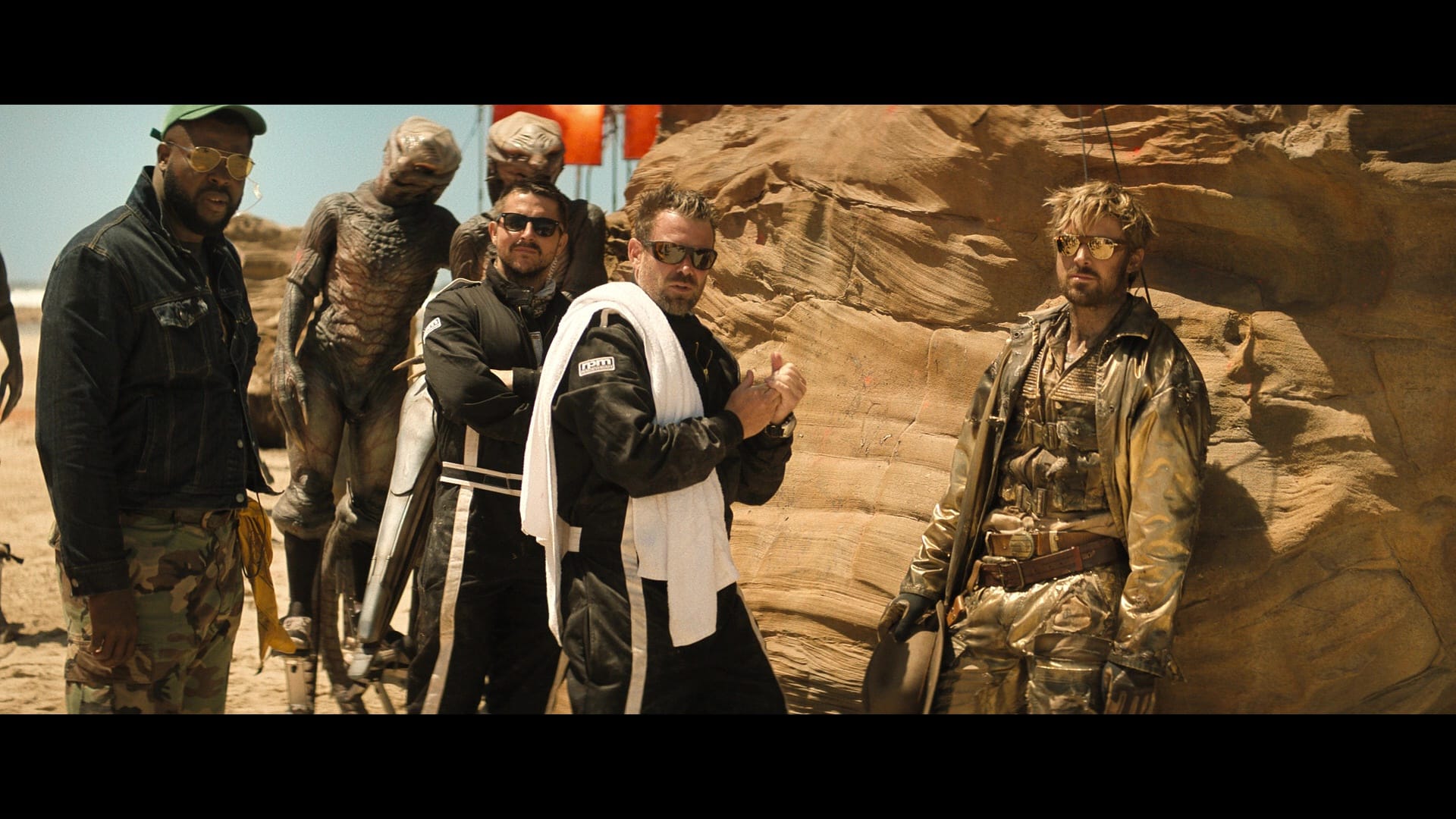
That’s why Colt Seavers being a decent person who’ll do anything for a friend is so crucial to the story, but also why Colt is surrounded by a group of dedicated professionals who just happen to be working on a really dumb sci-fi action movie with lots of car flips and explosions. You screw up a squib, someone gets hurt. You misplace a ramp, someone gets killed. Anyone who’s stepped on a film set knows how seriously people take this stuff, and The Fall Guy is in love with film sets and the lifers who populate them.
Which brings us to Ryan Gosling, who’s been on sets since he was a kid and is, honestly, one of the silliest human beings I’ve ever met. But he’s also a master of sheepish vulnerability and pop-eyed incredulity, and that elasticity is exactly what Colt Seavers needs. He’s got just a little splash of Kenergy, but untainted by the narcissism that corrupted Barbie’s doofus antagonist; by the time Colt Seavers gets that phone call, he’s already ready to jump through fire if it lets him see Jody again. That’s the guy you want for a movie like this. Someone who can jump through fire, but is also open enough to blast Taylor Swift in his truck, and really feel it:
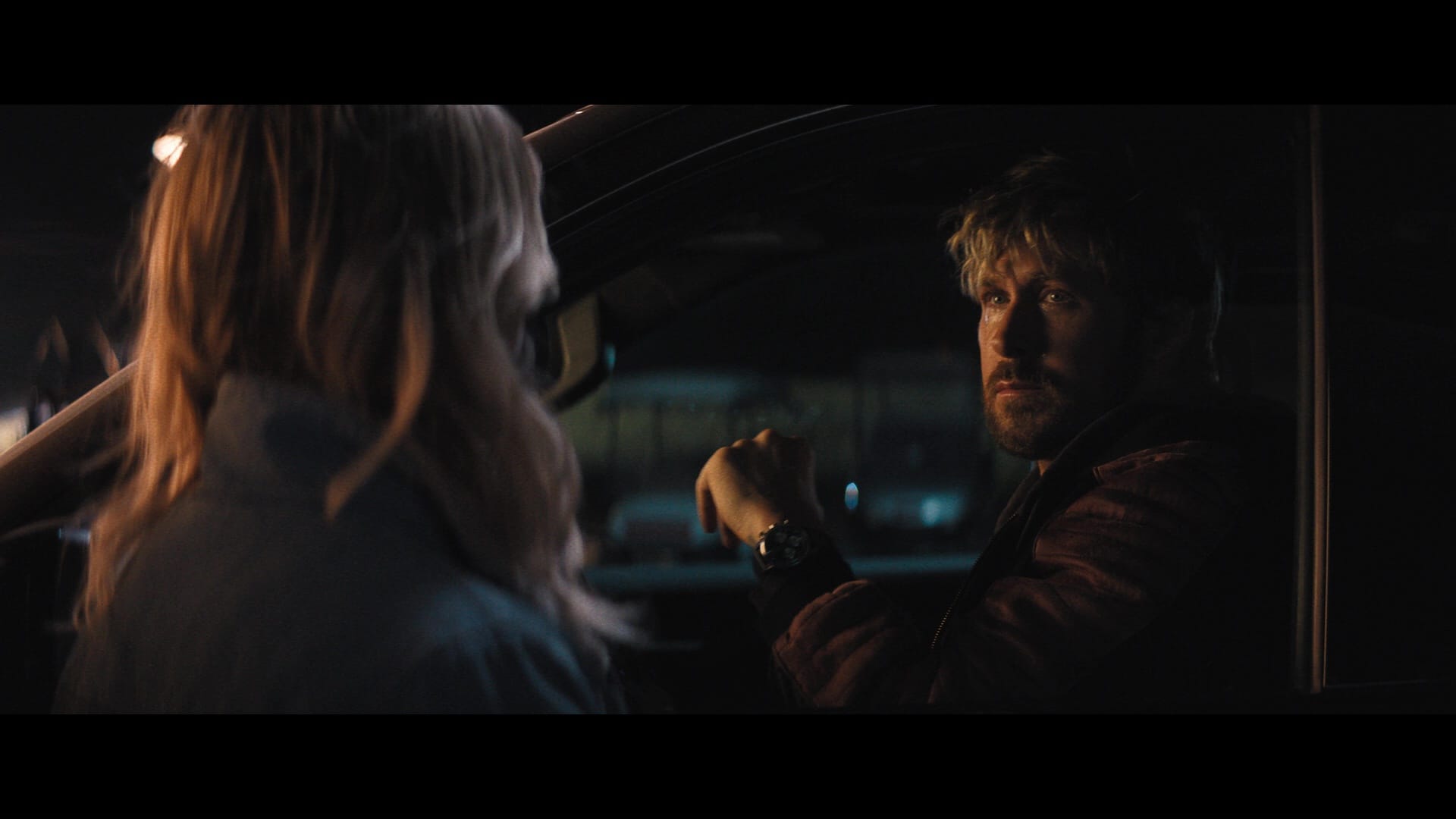
Yeah. That’s your guy.
And as good as he was in Barbie, Colt Seavers is easily the best role he’s had since Holland Marsh in The Nice Guys; both characters let Gosling channel his nervous energy and jittery comic timing into a sort of survival mode. He does comic bewilderment as well as any silent comedian, and Leitch’s elaborate stunt sequences let him unleash his inner Keaton and Lloyd. (Buster and Harold, not Michael and Christopher … but I have no doubt he’s got them rattling around in there as well.)
But I was talking about teamwork, and the whole picture is perfectly cast. Blunt plays Jody as a sharp, capable woman who’s blindsided by Colt’s reappearance in her life, but since the engine of the plot keeps them isolated from each other she finds interesting ways to process those feelings while still keeping her eye on the ball, work-wise:
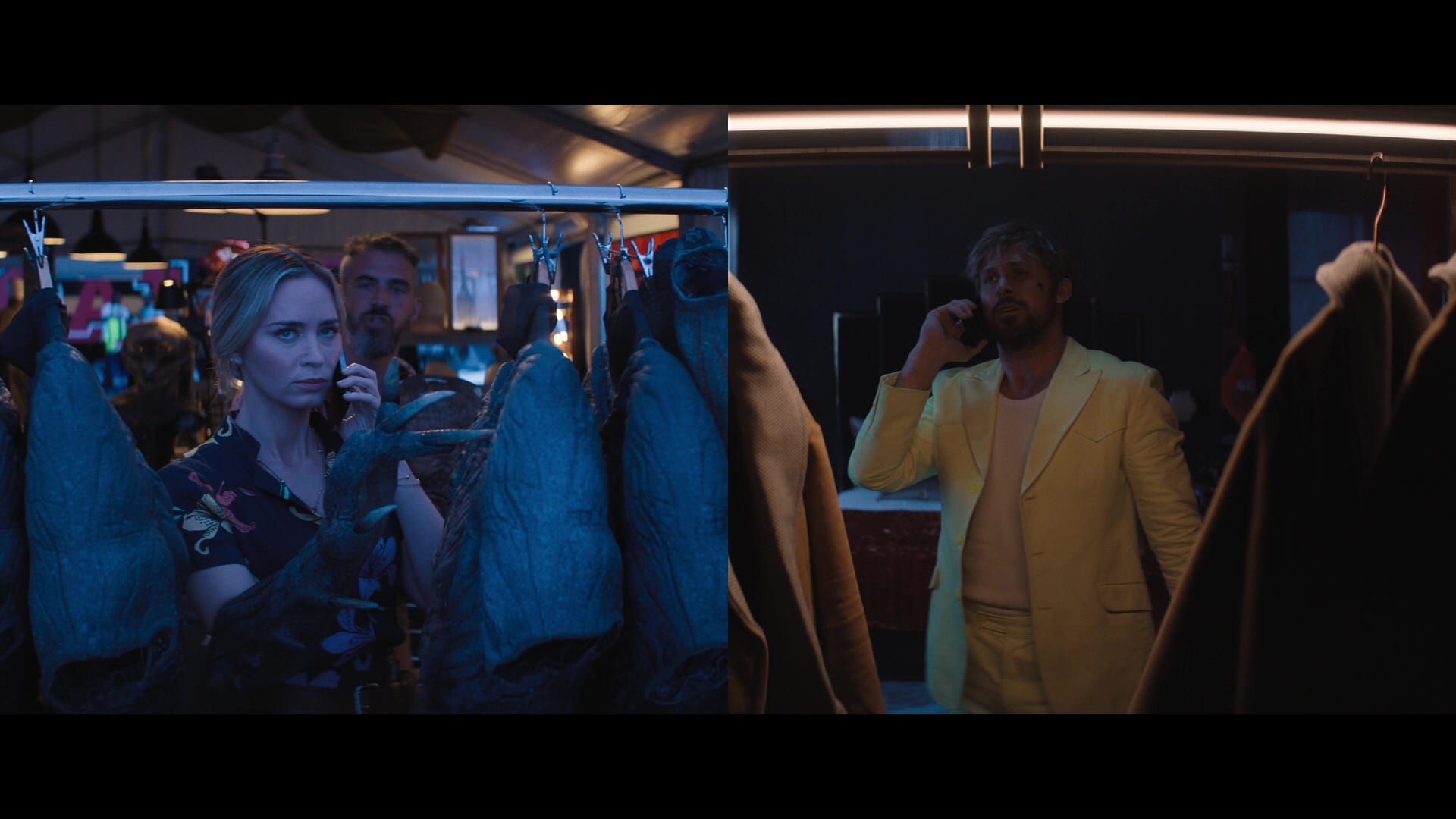
Jody gets her own arc, and she’s (frequently) smarter than the boys. Of course you cast Emily Blunt for that.
And Winston Duke, who’s made enough Marvel movies to appreciate the care of a good stunt team, is a fine choice for the good-natured stuntmaster Dan Tucker, who has enough confidence in Colt’s abilities for both of them; his give-and-take with Gosling about whether the beach is mooshy enough for Colt’s cannon roll is both patient and reassuring. If you’ve seen Duke in Edson Oda’s Nine Days, you know his capacity for warmth is as big as the moon, and it’s even more fun to see him pop it out in a shot like this.
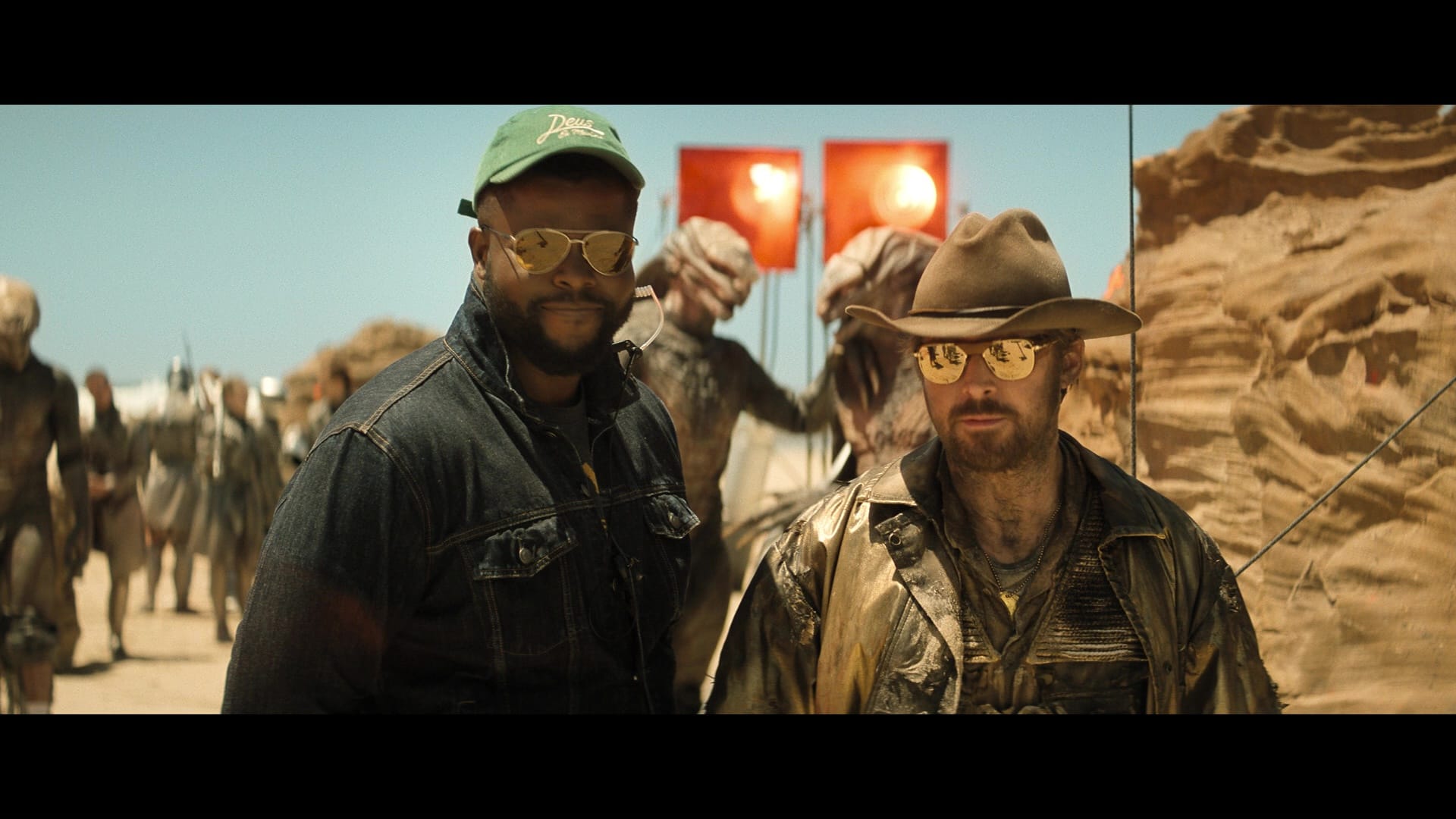
As Tom Ryder and his longtime producer/enabler Gail, Taylor-Johnson and Waddingham are almost certainly playing very specific Hollywood folks they’ve met and do not like. I respect that. I also respect Johnson’s total commitment to being really unlikable as Tom when he thinks no one is watching.
Also swirling around in there is the perpetually underrated Teresa Palmer, whom you know from everything from The Sorcerer’s Apprentice and Warm Bodies to A Discovery of Witches and The Clearing, and who’s clearly having the time of her life as Tom’s entirely unhinged girlfriend … who, unlike her paramour, definitely does her own stunts.
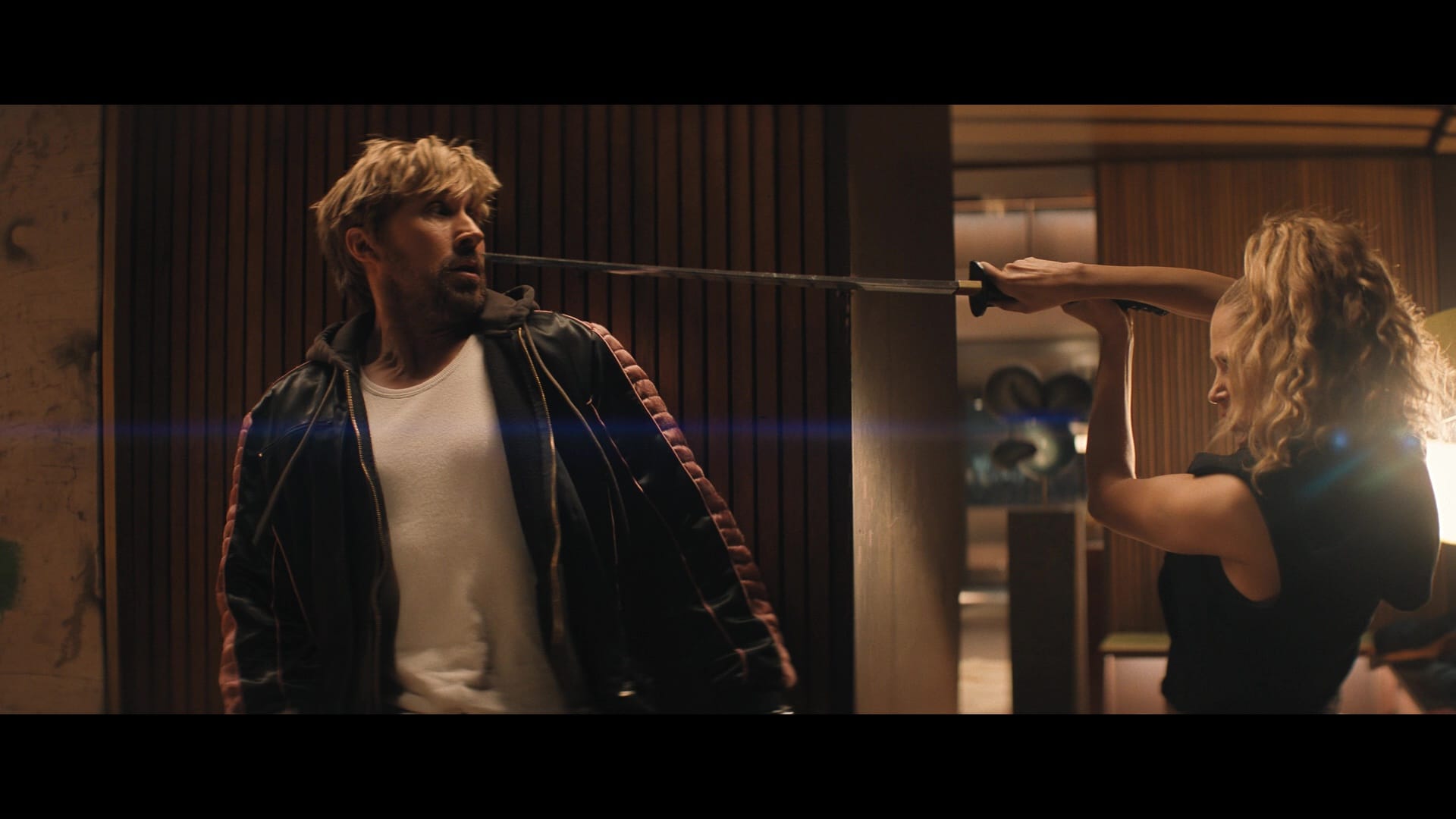
Anyway, yes, The Fall Guy is a great deal of fun, a pinball machine made by very talented people who love playing the game as much as they love building it. And unlike certain of Leitch’s other movies, it doesn’t bog down in the third act, instead turning into a whacked-out celebration of professionalism, competence and – ultimately – integrity. Everybody in the movie knows exactly what they’re doing and how to do it, even the bad guys. Well, most of them.
I’d also love to know who came up with the running gag of Colt trying to enjoy a simple cup of coffee while the world tries to kill him:
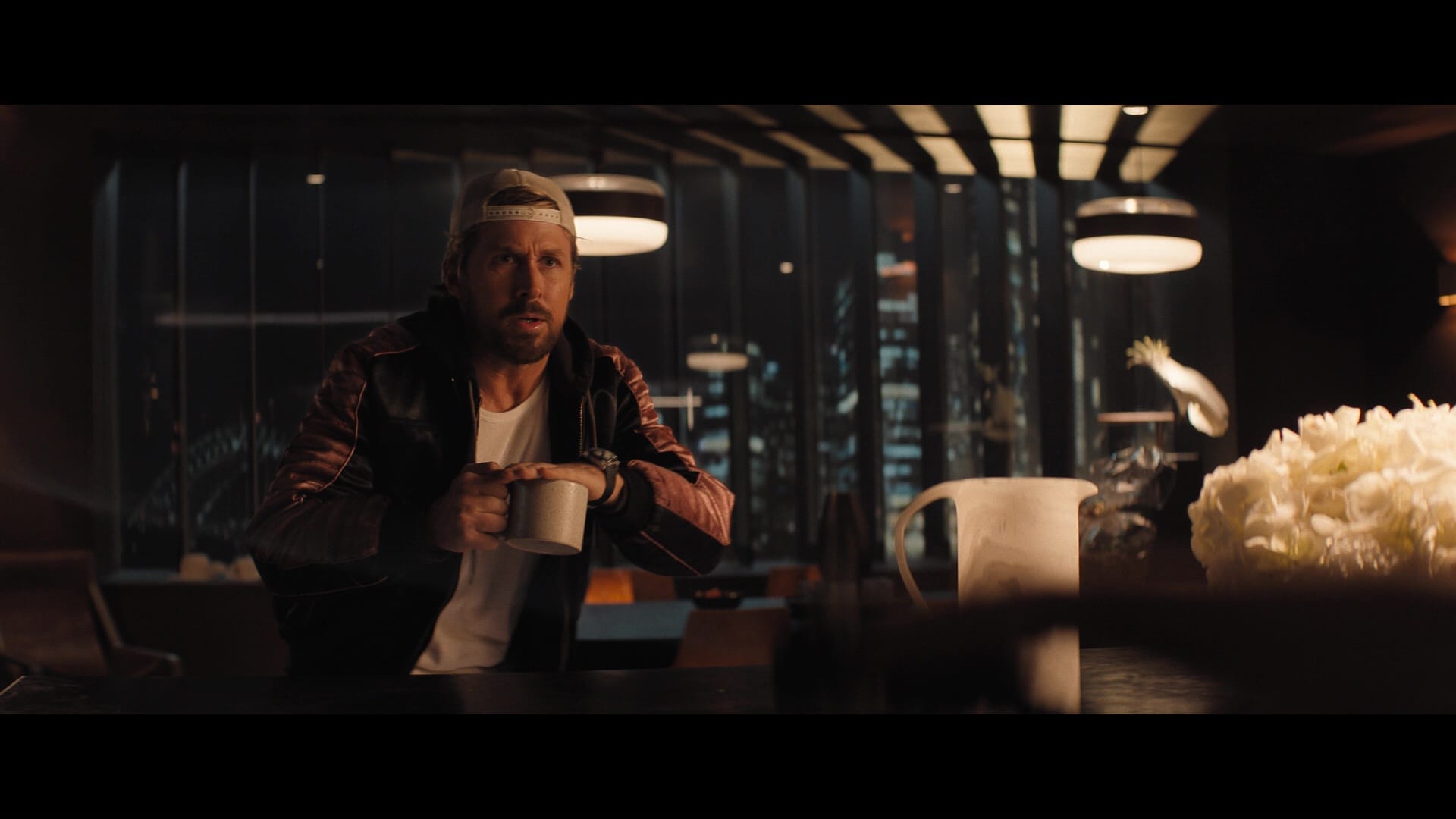
It’s absolutely a nod to Hudson Hawk, but I can’t tell if the reference came from Gosling, Pearce or Leitch. Whoever it was, I owe them a fruit basket.
Universal’s 4K release of The Fall Guy is a bonanza, offering two cuts of the film – the theatrical release and an extended version that runs 20 minutes longer, each on its own UHD platter – while the companion Blu-ray offers the theatrical cut. The extended version isn’t bad, and features a longer, more ridiculous version of the early nightclub fight, but the subsequent scene extensions and restorations work against the pacing, making the second half feel flabbier than it should. By comparison, the theatrical cut goes down like a Pop-Tart.
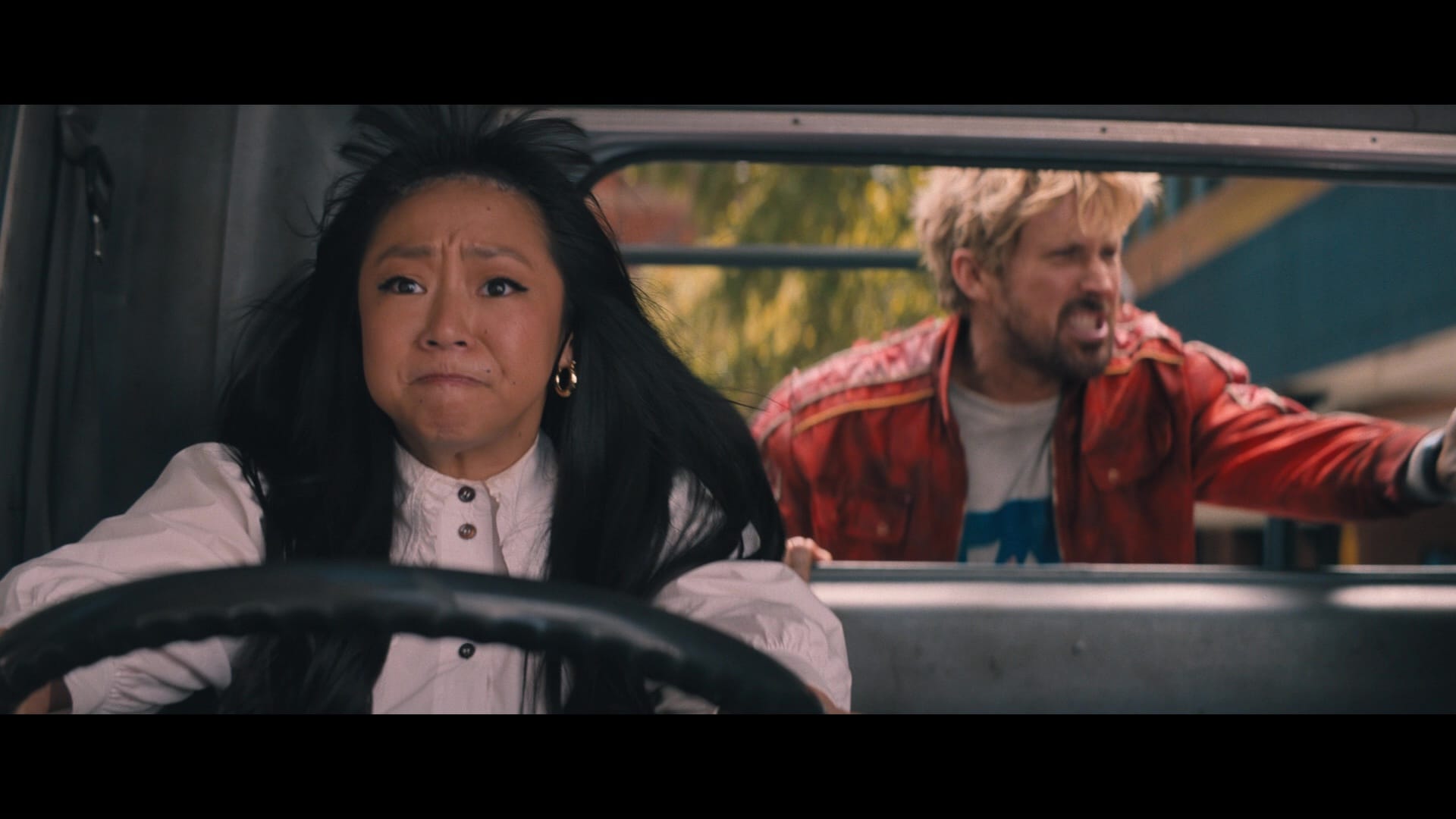
Extras – included on both the 4K and 2K discs of the theatrical cut – are extensive and celebratory, starting with a 20-minute look at the movie’s biggest set pieces and a zippy making-of that plays up the self-reflexive nature of the project. (I could have watched a lot more of that.) There are also spotlight pieces on the nightclub throwdown and the climactic car jump, an interview with Gosling’s stunt double Ben Jenkins, and a visit with parkour performer Bob Reese, who re-enacts some key falls complete with a Don’t Try This at Home warning for impressionable viewers. And if you were wondering why Jody’s movie shares a title – and little else – with a terrible 3D picture from the early ’80s … well, you’ll get your answer.
A gag reel has plenty of Gosling’s live-wire energy and some fun reactions from Blunt, a few alternate takes are tossed in as a treat, and the feature is accompanied by a very knowledgeable audio commentary from Leitch and producer Kelly McCormick, who are justifiably proud of sneaking their own production company’s logo and people into the film wherever it felt appropriate.
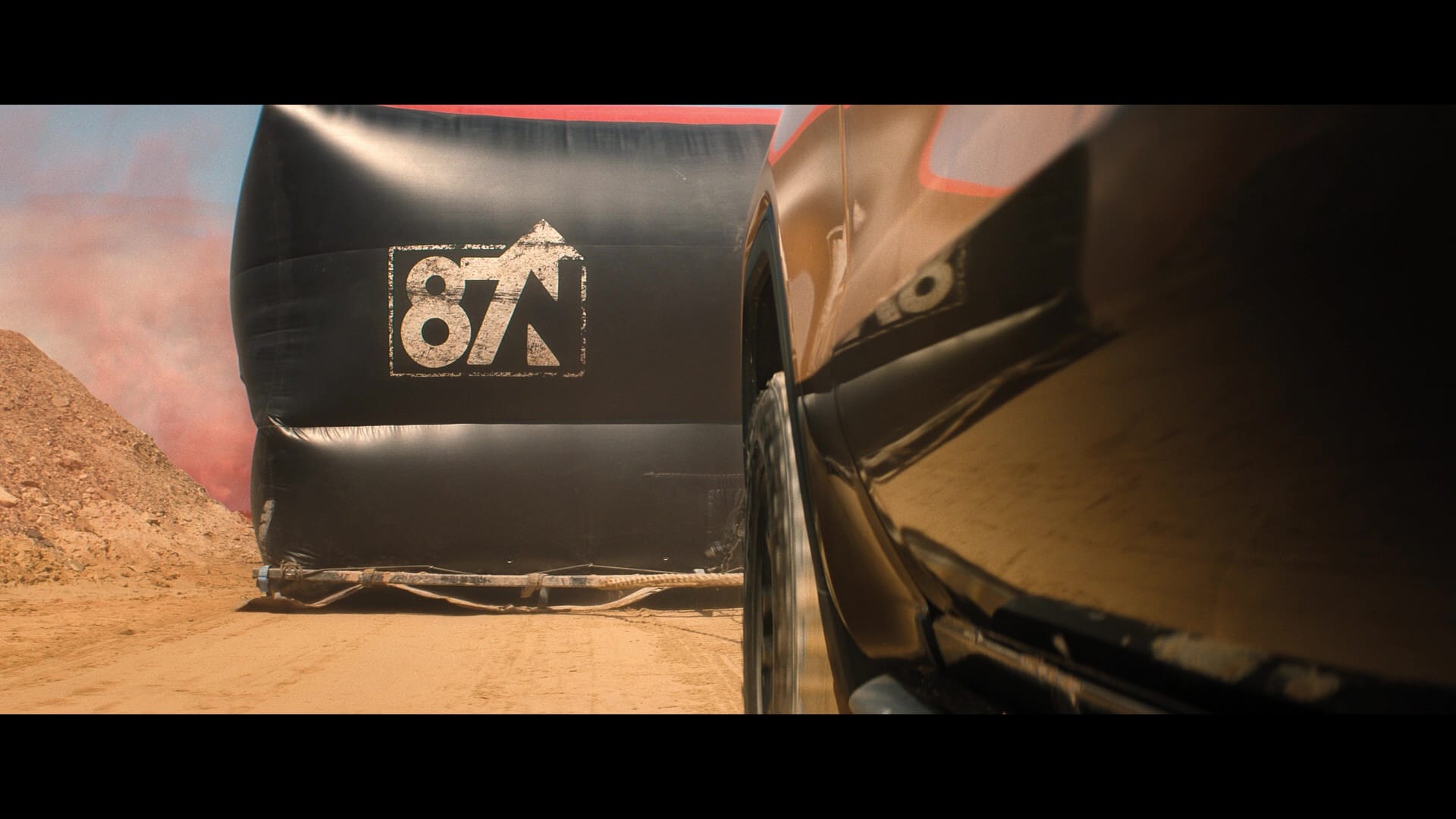
Nice one.
And then, allll the way over in the small room at the indie cinema, we have Jane Schoenbrun’s I Saw the TV Glow.
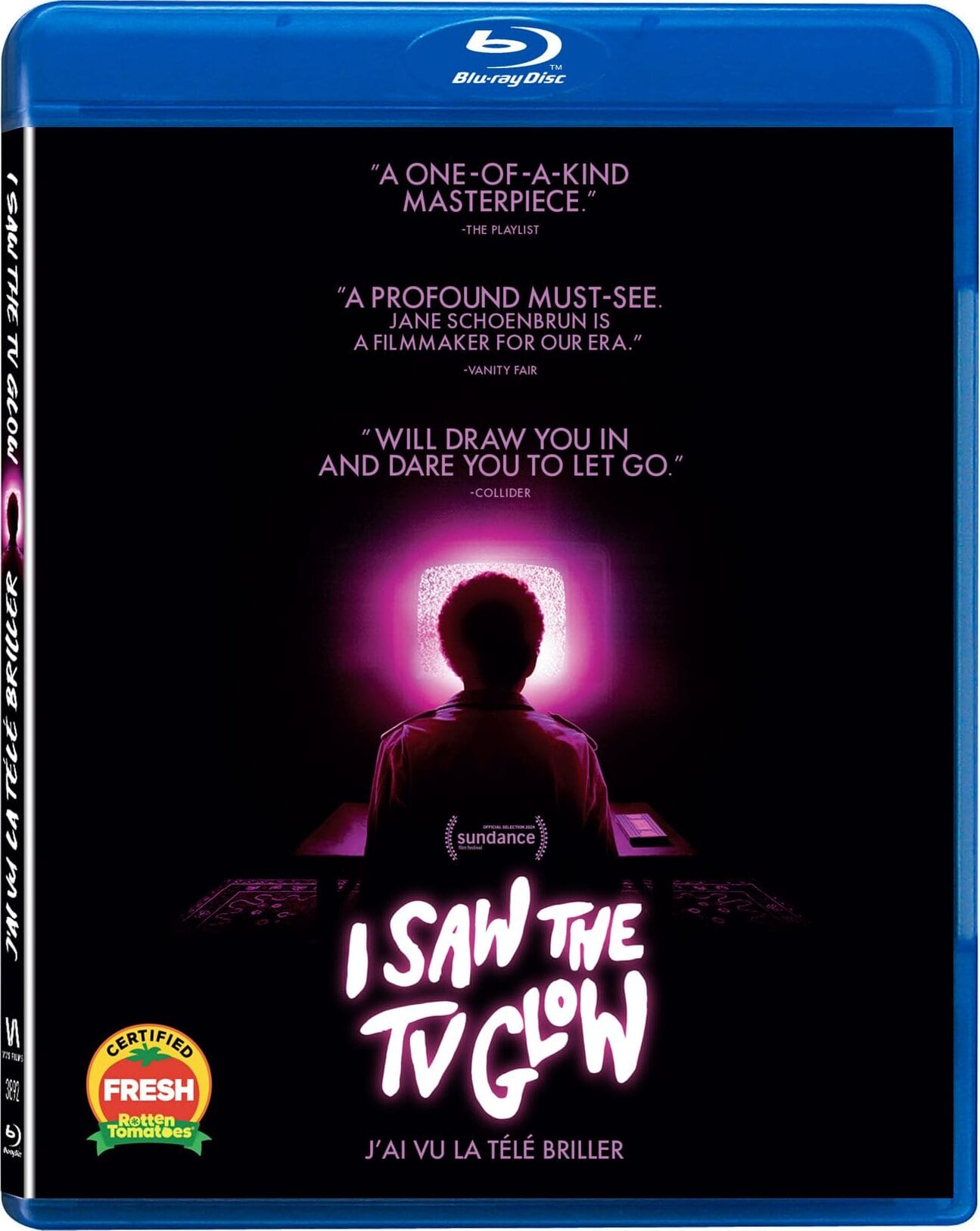
Here's how it starts: In 1999, misfit tween Owen and an older girl (Brigette Lundy-Paine) bond over their fandom of a YA television series called The Pink Opaque, about teenage girls battling supernatural menaces; two years later, the older girl vanishes just as the show is cancelled, leaving Owen (now played by Justice Smith) adrift.
A few years after that, she returns – claiming that the show was real, and she's been inside a sixth season that was never produced, and insisting that everything our protagonist has been experiencing is part of a diabolical plan by the show's Big Bad, Mr. Melancholy.
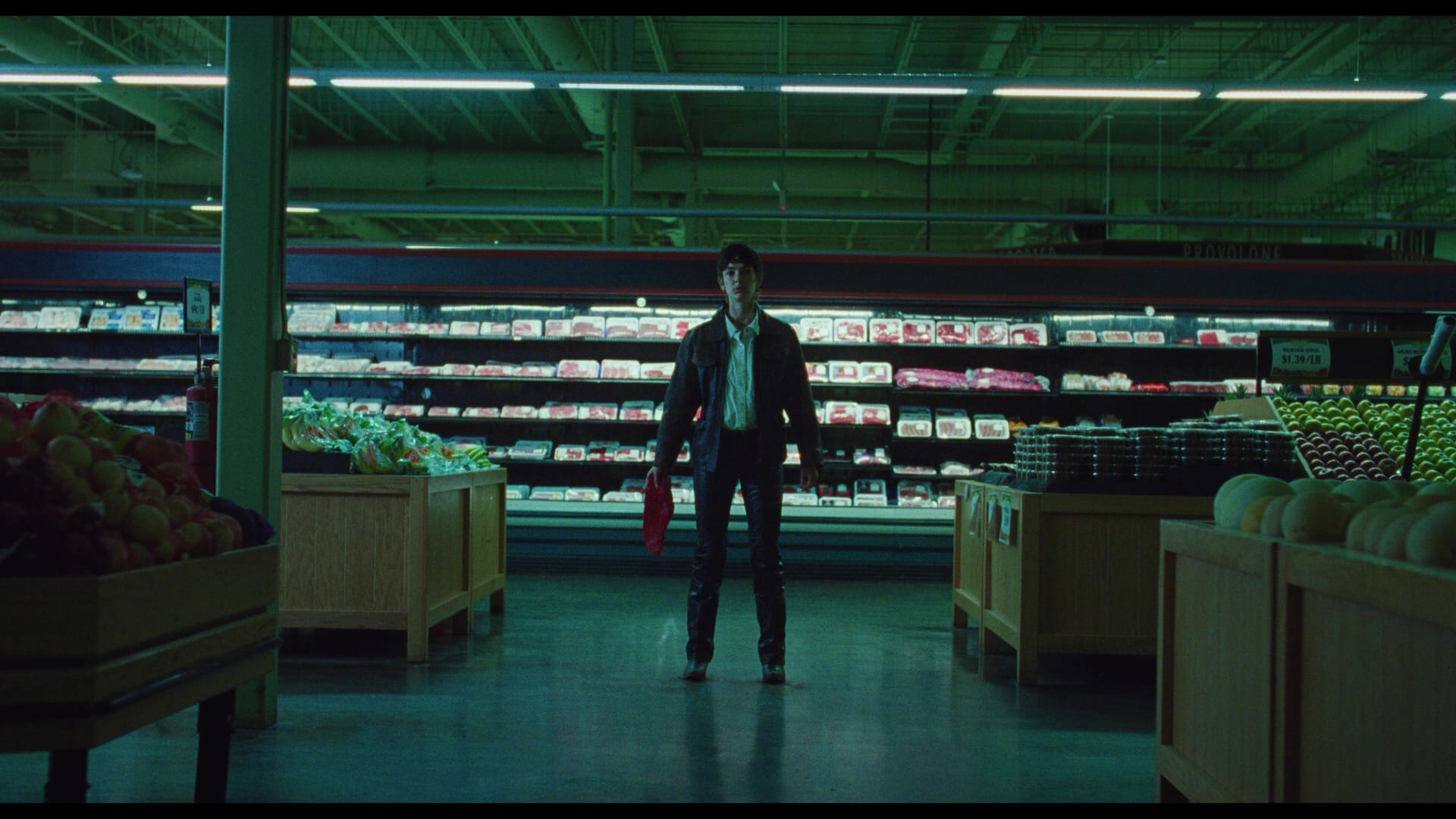
On the surface, Schoenbrun's follow-up to We’re All Going to the World’s Fair is made up of a lot of the same parts: Mismatched characters connected by a piece of culture, the dread that comes with realizing the world isn't what it's supposed to be, and the concept of identity as unknowable, fragile and confining.
TV Glow is also an ingenious riff on the reception of Buffy the Vampire Slayer and subsequent YA shows which were embraced by a fervent but tiny base of fans who finally saw themselves reflected in popular culture. (Schoenbrun has spoken extensively about the film as an allegory for trans awakening, but that’s just one of the levels it’s exploring.)
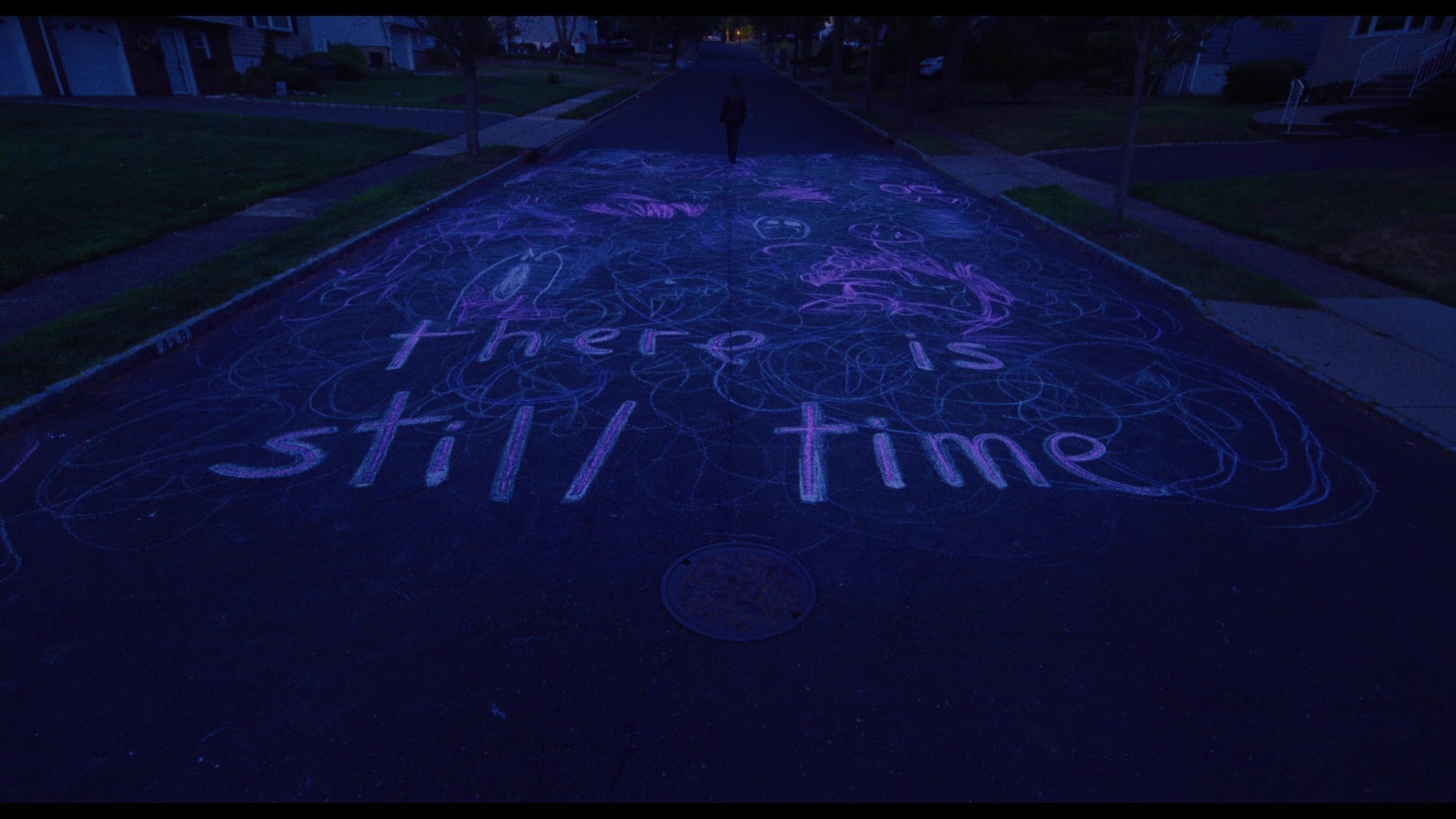
Schoenbrun takes those elements and turns them – gradually, disquietingly – into something new, a genuinely unnerving work that pulls at the same horror of suburban alienation mined so memorably by David Lynch, Charlie Kaufman and most recently Ari Aster.
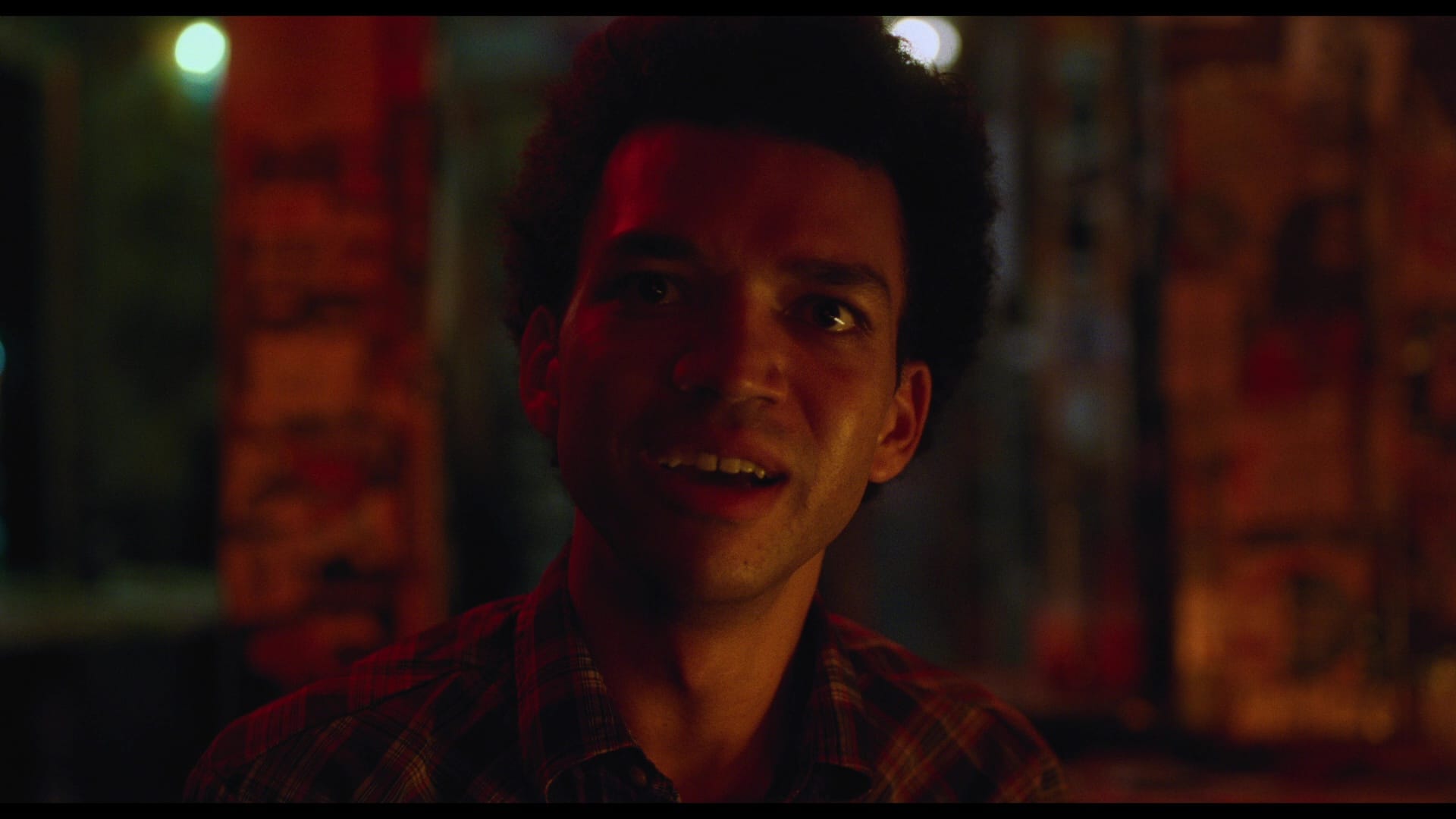
Smith – who’s built an interesting career by taking weird-ass indies like The Voyeurs in between big studio projects like Jurassic World: Fallen Kingdom and Detective Pikachu and Dungeons & Dragons: Honor Among Thieves – is remarkable as the bewildered Owen, stumbling through a story he can neither comprehend nor change; the actor is almost thirty, but he’s completely convincing as an awkward teenager and even more so as Owen edges toward adulthood.
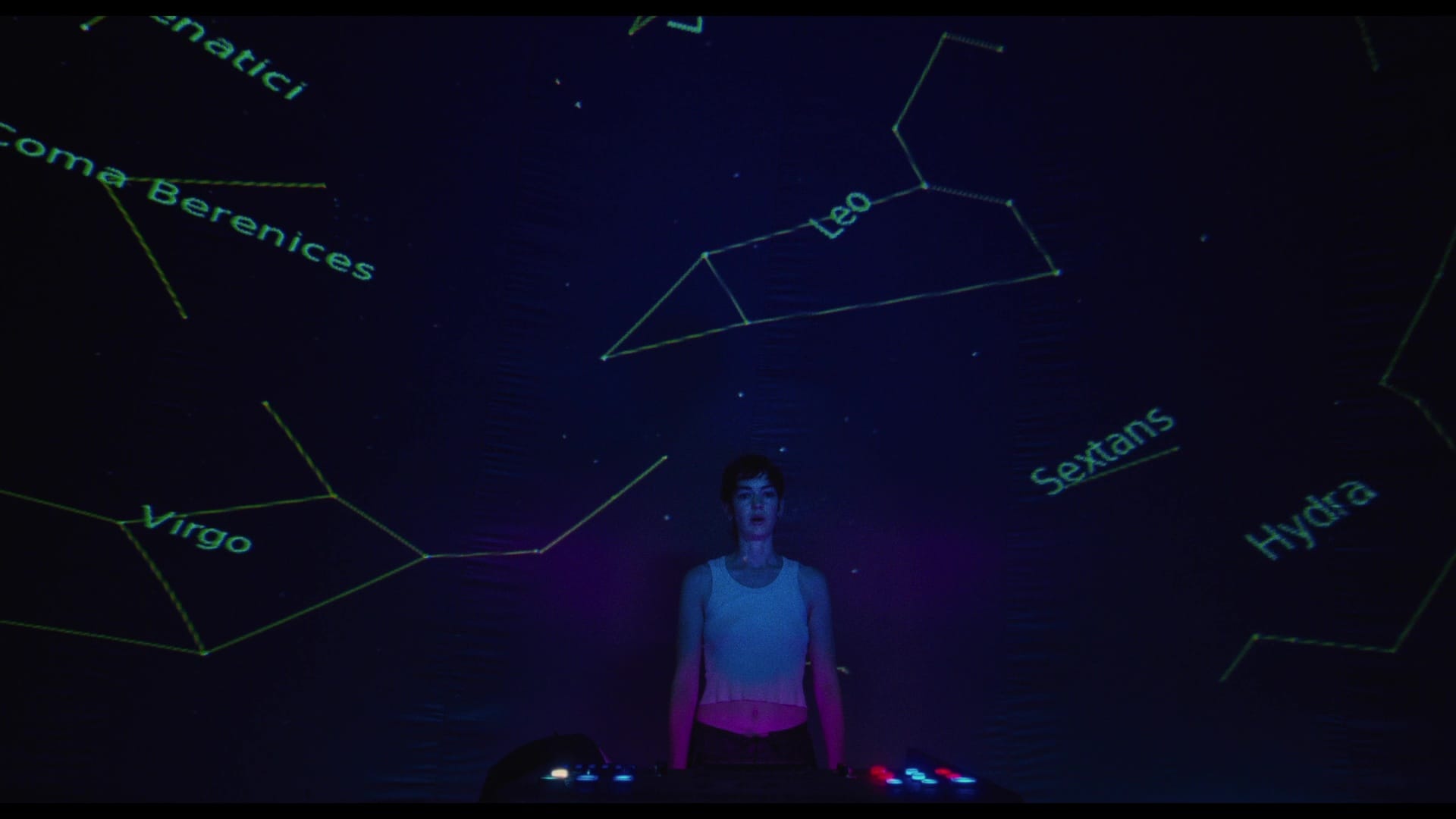
And Lundy-Paine – who is also much older than the character they’re playing, and who was so loose and funny as Ted's daughter Billie in Bill & Ted Face the Music – is in an entirely different mode here: Maddy is a dreamer and a charmer, until she comes back as someone Owen struggles to recognize – now holding herself with the anxious tension of someone who knows no one will believe her impossible story, but can't help hoping this time might be different.
It's a hell of a picture, the cumulative impact muted only by its very last beat; had Schoenbrun cut to black thirty seconds earlier, I Saw the TV Glow would feel like a masterpiece. But it's still pretty damn great ... and, to bring it back around to The Fall Guy, it's as much about the relationships we build with the stories we love as it is about our relationships we build with one another.
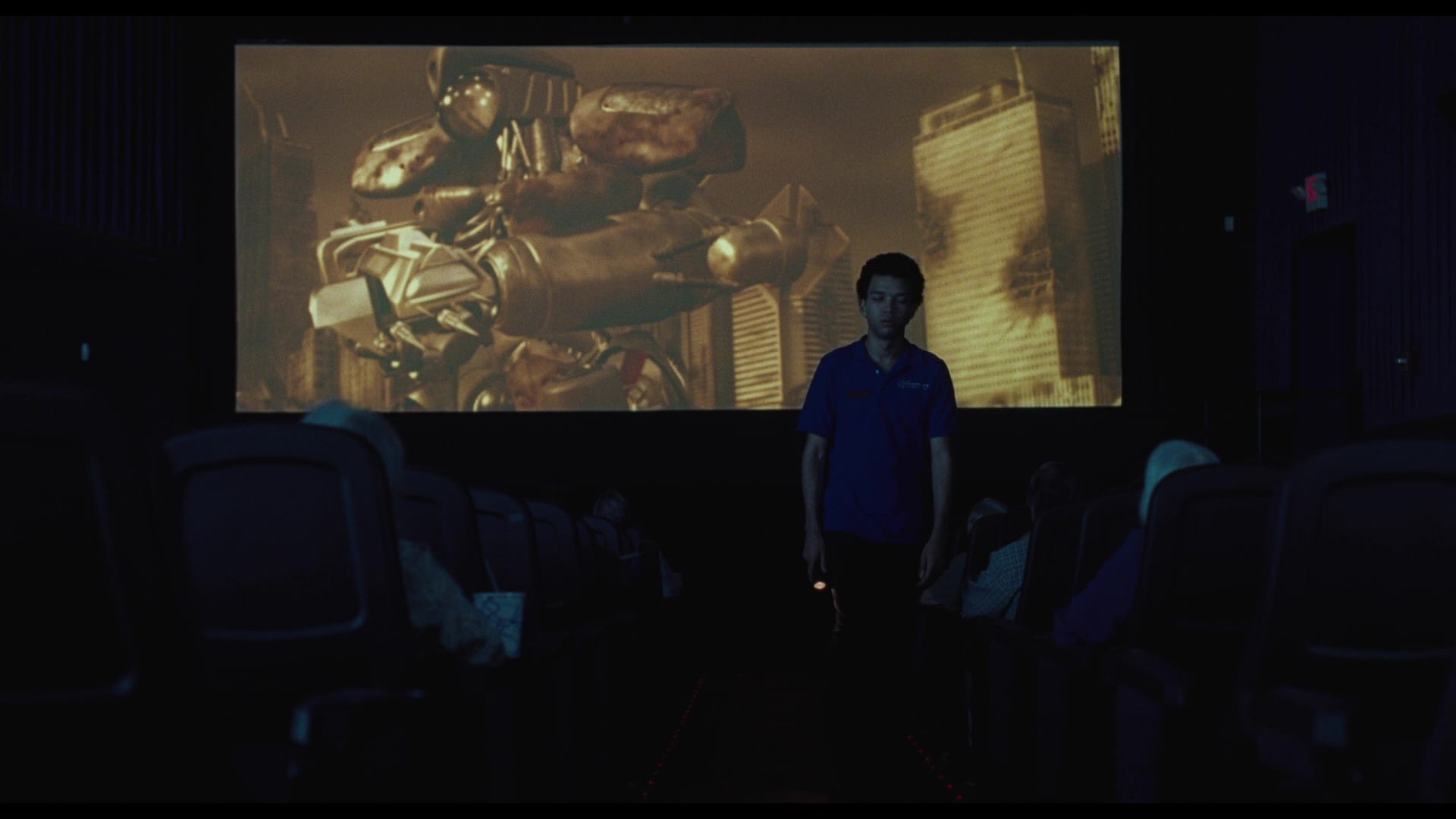
VVS Films’ Blu-ray presents Schoenbrun and DP Eric K. Yue’s deliberately murky, lo-fi vision as faithfully as possible. The film’s bursts of clarity are also beautifully rendered in contrast to the 4:3 SD excerpts of The Pink Opaque.
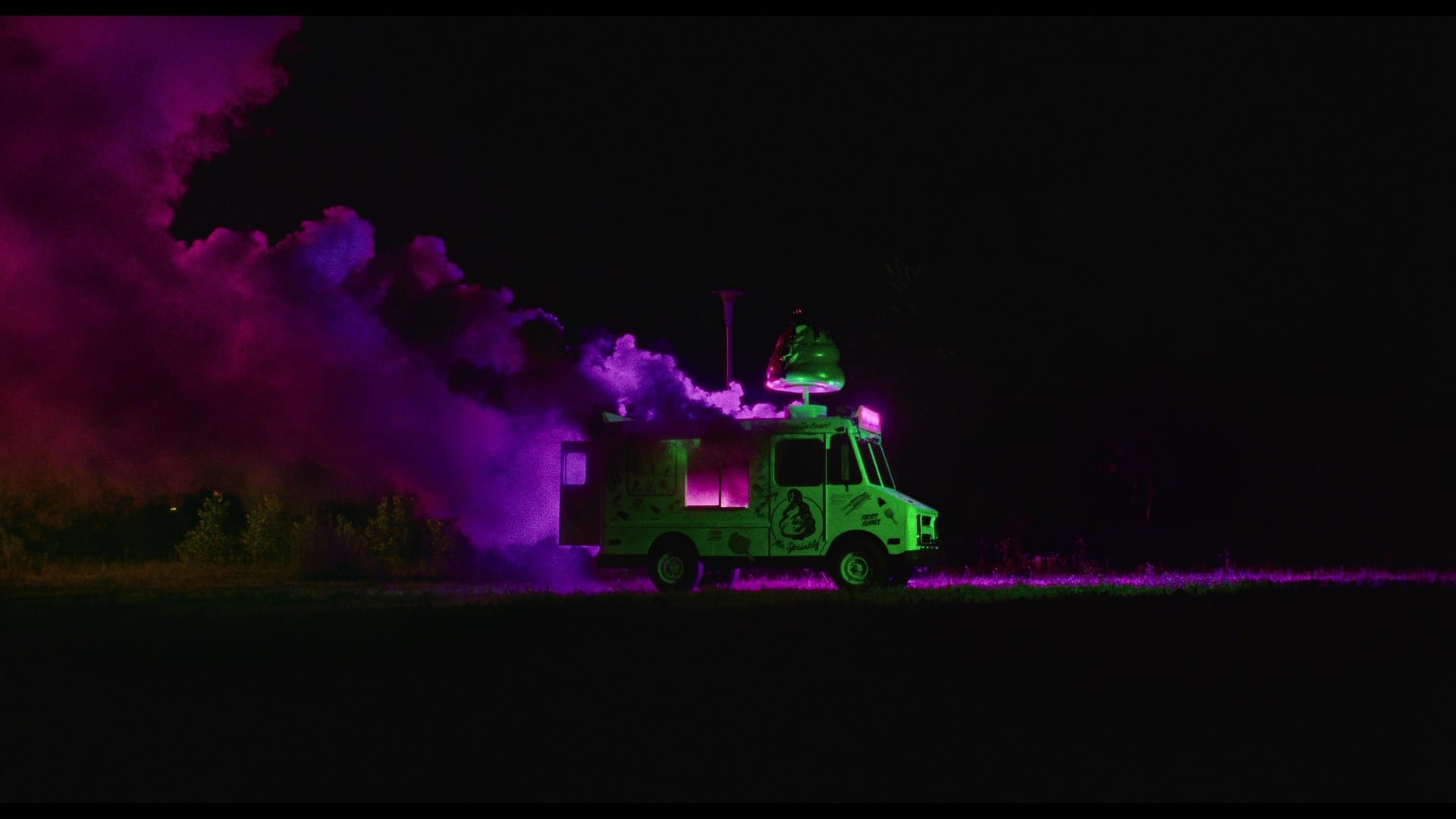
Extras aren’t as lavish as those on The Fall Guy – a polished featurette and a collection of deleted scenes that includes more of Owen's visions and clips of some very uncanny children's television – but I don’t think I Saw the TV Glow wants to be unpacked. Like We’re All Going to the World’s Fair before it, the movie lives in the weird, mysterious space where nothing can be fully understood or explained … just felt, and felt deeply.
Schoenbrun says there’s a third movie coming in their Screen Trilogy. I will be there.
The Fall Guy is available in 4K/BD and BD/DVD combos from Universal Studios Home Entertainment; I Saw the TV Glow is available on Blu-ray from VVS Films in Canada; an A24 Shop exclusive is on the way in the US, and I’m curious to see what the supplements on that one look like.
Coming up next, for paid subscribers: Concubines! Secret agents! And possibly sharks.
